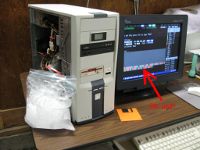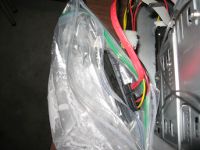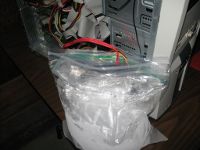Seagate ST3500320AS, Free Data Recovery Method
The Seagate ST3500320AS 7200.11 500GB "Barracuda" drive must be the
bread and butter of folks that do data recovery for a living.
This drive was sold back in 2007 (until 2008 I believe). It was really cheap at the time and places like Fry's and
Newegg couldn't keep it on the shelves. A 500GB drive in 2007 for around $70 was a big deal!
Clearly this model possessed one or more design defects. I don't know
if Seagate ever admitted to the problems, nor do I care since I'll
never purchase another Seagate (or Maxtor) product ever again. A
search on seagate's own forums
brings up about 600 threads with people describing the failures.
Mine lasted a year and then outright died one day. I could no
longer get any data off of it whatsoever, regardless of all the state
of the art 'miracle' hard drive recovery tools. I'm referring to
stuff like SpinRite, MHDD, SeaTools, etc.. They all proved
useless. Anyway, with a little ingenuity and perseverance I was
able to recover about 90% of the files I had on there.
I basically froze the drive, and then pulled files off over short
periods, refroze, pulled more data off, etc.. Freezing the drive
works because it causes all the parts to contract (shrink)
slightly. Clearly whatever design flaw existed had something to
do with heads or head mechanism. Cooling the parts (shrinking the
parts) allowed the heads to read
data on the platters at least for short periods of time.
I used two large ziploc style bags. I put the hard drive inside
one then put that bag inside the second bag and filled the second bag
full of water. I say "full of water" meaning to the point where
the bag was bulged out almost as far as it could go without spilling
into the first bag. I left an opening to the drive for the SATA
and power cables, then propped the bags up in the freezer and waited
until the mass was frozen solid. Anyway, you can see it in the
photos. Keep in mind that ice takes more volume than water due to
the molecular arrangement in the frozen state, so don't fill it so full
that it bursts the outer bag when frozen.
It's important to have a large mass of ice surrounding the drive.
Although when you pull the bag out of the freezer it will stay frozen
for a long time, while the hard drive is powered inside the ice mass it
is still generating a lot of local heat and tries to melt the ice mass
from the inside out. This explains why you can only recover files
in short sessions and why the mass needs to be constantly refrozen.





